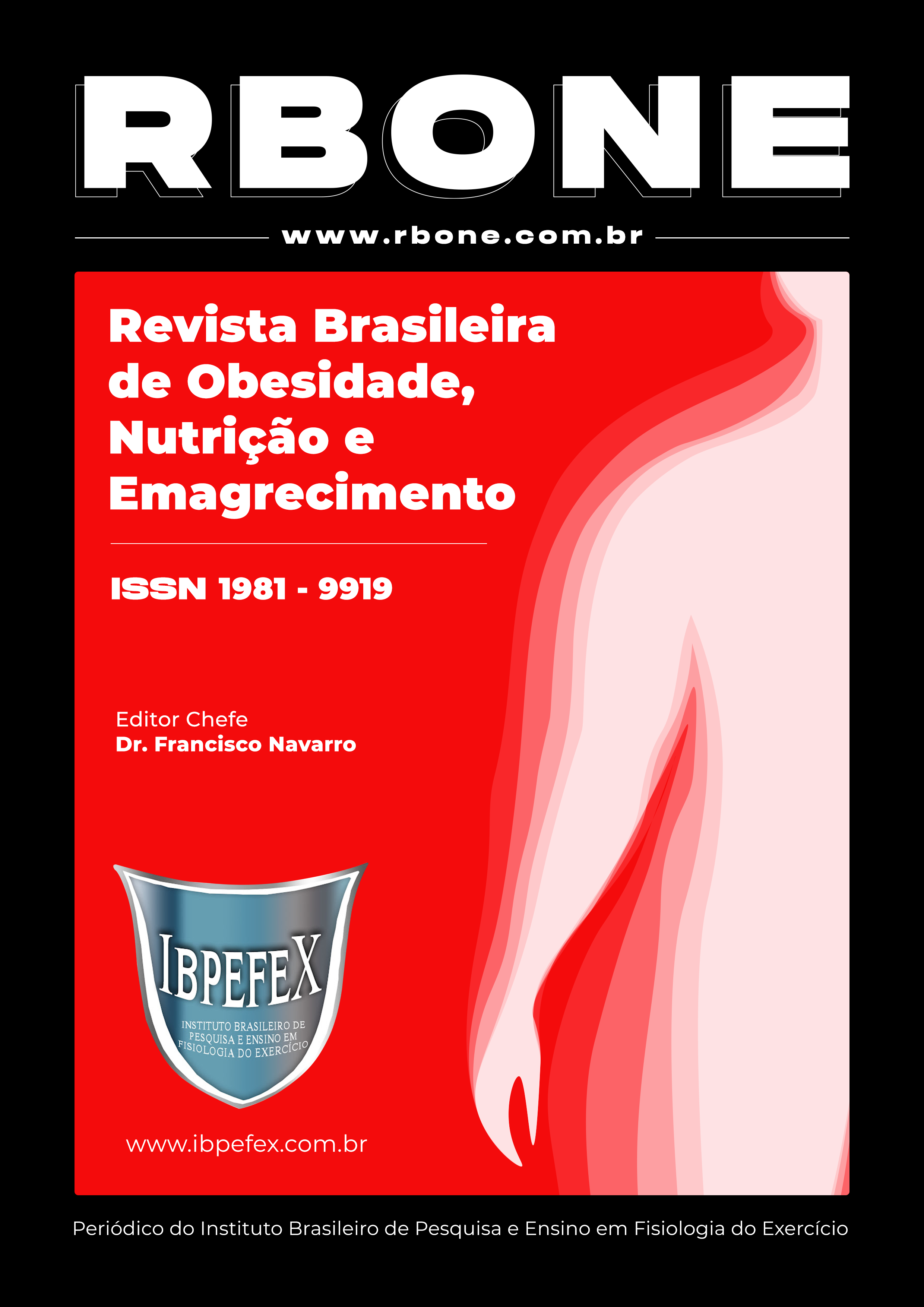Dysfunctional foods: when in addition to empty calories there is another damage to health
Abstract
The purpose of this article is to present an alternative name for processed foods rich in sugars, unhealthy fats, sodium, and chemical additives, since the long-term consequences of their intake are not clear to the population. These foods not only contribute to weight gain but are also associated with other deleterious effects on the body due to their composition and the presence of chemical additives. Since consumers are attracted to adjectives that show potential benefits of some foods, such as the name of functional foods, this article suggests the use of a name that alerts the consumer to the need to avoid or limit the intake of ultra-processed foods. In the opposite direction to functional foods, this article presents the name of dysfunctional foods for those food rich in sugars, unhealthy fats, sodium, and chemical additives that, in addition to not nourishing the organism, confer additional damage to health.
References
-Brasil. Agência Nacional de Vigilância Sanitária. Resolução nº 18, de 30 de abril de 1999. Aprova o Regulamento Técnico que estabelece as Diretrizes Básicas para Análise e Comprovação de Propriedades Funcionais e ou de Saúde Alegadas em Rotulagem de Alimentos. Diário Oficial da República Federativa do Brasil. Brasília. 1999.
-Brasil. Ministério da Saúde. Secretaria de Atenção à Saúde. Departamento de Atenção Básica. Guia Alimentar para a População Brasileira. 2ª edição. Brasília-DF. 2014.
-Brasil. Ministério da Saúde. Secretaria de Vigilância em Saúde. Departamento de Análise em Saúde e Vigilância de Doenças Não Transmissíveis. Vigitel Brasil 2019: vigilância de fatores de risco e proteção para doenças crônicas por inquérito telefônico: estimativas sobre frequência e distribuição sociodemográfica de fatores de risco e proteção para doenças crônicas nas capitais dos 26 estados brasileiros e no Distrito Federal em 2019 [recurso eletrônico] / Ministério da Saúde, Secretaria de Vigilância em Saúde, Departamento de Análise em Saúde e Vigilância de Doenças não Transmissíveis. Brasília. Ministério da Saúde. 2020.
-Chazelas, E.; e colaboradores. Food additives: distribution and co-occurrence in 126,000 food products of the French market. Sci Rep. 2020. p. 1-15.
-Diez-Garcia, R.W. Reflexos da globalização na cultura alimentar: considerações sobre as mudanças na alimentação urbana. Rev. Nutr. Vol. 16. Num. 4. 2003. p. 483-492.
-Diplock, A.T.; Aggett, P.J.; Ashwell, M.; Bornet, F.; Fern, E.B.; Roberfroid, M.B. Scientific concepts of functional foods in Europe: consensus document. British Journal of Nutrition. Vol. 88. Suppl.1. 1999. p. 1-27.
-Fiolet, T.; e colaboradores. Consumption of ultra-processed foods and cancer risk: results from NutriNet-Santé prospective cohort. BMJ. Vol. 360. 2018.
-Fiolet, T.; e colaboradores. Ultra-processed food intake and risk of cardiovascular disease: prospective cohort study (NutriNet-Santé). BMJ. Vol. 365. 2019. p. 1451.
-Lee, D.; Albenberg, L.; Compher, C. et al. Diet in the Pathogenesis and Treatment of Inflammatory Bowel Diseases. Gastroenterology. 2015.
-Lee, D.; e colaboradores Children with Crohn’s Disease Frequently Consume Select Food Additives. Dig Dis Sci. Vol. 63. Num. 10. 2018. p. 2722–2728.
-Manzel, A.; e colaboradores Role of “Western Diet” in Inflammatory Autoimmune Diseases. Curr Allergy Asthma Rep. Vol. 14. Num. 1. 2014 p. 404.
-Marins, B.R.; Araújo, I.S.; Jacob, S.C. A propaganda de alimentos: orientação, ou apenas estímulo ao consumo? Ciência & Saúde Coletiva. Vol. 16. Num.9. 2011. p. 3873-3882.
-Popkin, B. Ultra-processed foods’ impacts on health. 2030 - Food, Agriculture and rural development in Latin America and the Caribbean. Santiago de Chile. FAO. Vol. 34. 2020. p. 1-27.
-Soliah, L.A.L.; Walter, J.M.; Jones, S.A. Benefits and barriers to healthful eating: What are the consequences of decreased food preparation ability? Am J Lifestyle Med. Vol. 6. Num. 2. 2012. p. 152-158.
-Trasande, L.; Shaffer, R.M.; Sathyanarayana, S. Council on Environmental Health. Food Additives and Child Health. Pediatrics. Vol. 142. Num. 2. 2018. p. 1-17.
Copyright (c) 2022 Fabíola Pansani Maniglia

This work is licensed under a Creative Commons Attribution-NonCommercial 4.0 International License.
Authors who publish in this journal agree to the following terms:
- Authors retain the copyright and grant the journal the right of first publication, with work simultaneously licensed under the Creative Commons Attribution License BY-NC which allows the sharing of the work with acknowledgment of the authorship of the work and initial publication in this journal.
- Authors are authorized to enter into additional contracts separately for non-exclusive distribution of the version of the work published in this journal (eg, publishing in institutional repository or book chapter), with acknowledgment of authorship and initial publication in this journal.
- Authors are allowed and encouraged to post and distribute their work online (eg, in institutional repositories or on their personal page) at any point before or during the editorial process, as this can bring about productive change as well as increase impact and impact. citation of published work (See The Effect of Free Access).






